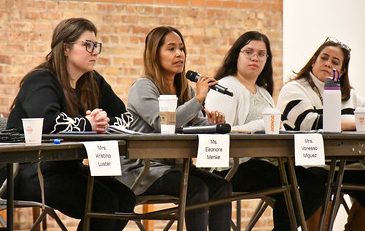Financial Aid Night provides valuable info for MC students
Many MC students can benefit from financial info for their college plans. (photo via Wikimedia Commons under Creative Commons license)
Mount Carmel Financial Aid Night was held on October 19th with important information to help students with the college process.
Figuring out how to pay for college can be the hardest part for parents and students, and at Financial Aid Night, college counselor Mrs. Kristina Luster and Illinois Student Assistance Commission member Cynthia Davalos explained how certain financial aid agencies can make it easier on helping students and parents afford college.
Mrs. Luster explained what financial aid is and how it is borrowed, given, or earned money that can be obtained from various sources to help pay for college. Financial aid makes college affordable and helps with the cost that students cannot pay. To be considered for student aid, a student must complete all forms required by a college. Some types of financial aid are grants, scholarships, loans, and work-study. Funds may be merit-based, need-based, or non-need-based. The sources from the financial aid are federal government, state government, college institutional aid, and outside and private sources.
Ms. Davalos talked about ISAC, which is the college access and financial aid agency in the state of Illinois that administers scholarship, grant, prepaid tuition, and student loan repayment/forgiveness programs. ISAC’s mission is to “provide Illinois students with information and assistance to help make education beyond high school accessible and affordable.” ISAC offers Illinois residents a variety of grant and scholarship programs, eligibility for which is based on factors such as financial need, academic achievement, chosen field of study, or military service.
Another financial aid opportunity is the Free Application for Federal Student Aid. The FAFSA loan is the first step in the financial aid process for most students applying for financial aid and is used to apply for state and federal financial aid programs. Some colleges use it to award institutional aid and the application process is zero cost. “Has your (or your family’s) financial situation changed from what is reflected on your federal income tax return?” FAFSA asks on its website. “For example, you or a family member has lost a job or claimed unemployment benefits. If so, you may be eligible to have your FAFSA form adjusted to qualify for additional aid.
How much aid a student can receive depends on the cost of attendance at the college, subtracted from the expected family contribution (the amount a student and family can be expected to contribute in one academic year), which is used to determine a student’s eligibility for most federal and state aid programs. Some trusted websites are ISAC’s student portal and the federal student aid website.






